Your Ultimate Guide to Choosing the Best Smart Air Purifier for Allergies
If you suffer from allergies, you know how crucial it is to maintain clean, allergen-free air in your home. With pollen, dust, pet dander, and other allergens constantly infiltrating your living spaces, finding a solution that effectively tackles these issues is essential. Enter the smart air purifier: a high-tech, efficient device designed to improve air quality and alleviate allergy symptoms. In this guide, we’ll explore everything you need to know about smart air purifiers and how to choose the best one for your needs.
What is a Smart Air Purifier?
An improved model of the conventional air purifier is the smart air purifier. Along with removing air pollutants like smoking, pollen, and dust, it also has smart technology installed for improved ease and performance. These gadgets are compatible with Google Assistant, Apple HomeKit, Amazon Alexa, and other smart home systems. They can also be managed via smartphone applications and established Wi-Fi connections.
Why Choose a Smart Air Purifier for Allergies?
Allergies can be debilitating, causing symptoms like sneezing, itchy eyes, and respiratory issues. Smart air purifier for allergies offer several advantages that make them particularly effective for allergy sufferers:
- Real-Time Air Quality Monitoring: Smart air purifiers continuously monitor air quality and adjust their settings automatically to ensure optimal performance.
- Remote Control and Alerts: Manage your air purifier from anywhere using your smartphone. Receive notifications about air quality changes and filter replacements.
- Integration with Smart Home Ecosystems: Seamlessly integrate your air purifier with other smart devices in your home for a comprehensive allergy management system.
- Energy Efficiency: Smart air purifiers are designed to run efficiently, with features like scheduling and auto mode that adjust operation based on air quality.
Smart air purifier for allergies: Key Features to Look For
When selecting a smart air purifier for allergies, consider the following features:
1. High-Quality Air Filters
- HEPA Filters: True HEPA (High-Efficiency Particulate Air) filters capture 99.97% of particles as small as 0.3 microns, including pollen, dust mites, and pet dander.
- Activated Carbon Filters: These filters are essential for removing odors and volatile organic compounds (VOCs).
2. Air Quality Sensors
Look for purifiers with advanced sensors that can detect and report levels of PM2.5 (fine particulate matter), VOCs, and other allergens.
3. Coverage Area
Ensure the purifier can handle the size of the room where it will be used. Each model specifies its maximum coverage area.
4. Noise Levels
Choose a model that operates quietly, especially if you plan to use it in a bedroom or office.
5. Smart Features and Connectivity
Check compatibility with your preferred smart home ecosystem. Features like remote control, scheduling, air quality alerts, and voice control enhance convenience.

Top Smart Air Purifier for Allergies
Here are some of the best Smart air purifier for allergies available, each offering unique features to cater to allergy sufferers:
1. Dyson Pure Cool TP04
The Dyson Pure Cool TP04 is both an air purifier and a fan. It features a HEPA filter and an activated carbon filter, capturing 99.97% of allergens and pollutants. Its smart features include real-time air quality monitoring, remote control via the Dyson Link app, and compatibility with Alexa.
2. Coway Airmega 400S
Known for its powerful performance, the Coway Airmega 400S can cover large rooms up to 1,560 square feet. It uses a combination of HEPA and activated carbon filters. The smart features include air quality monitoring, scheduling, and app control. It’s also compatible with Amazon Alexa.
3. Levoit LV-PUR131S
A budget-friendly option, the Levoit LV-PUR131S offers excellent value with its HEPA and activated carbon filters. It covers rooms up to 322 square feet and features smart capabilities like app control, scheduling, and air quality monitoring.
4. Molekule Air Pro
The Molekule Air Pro uses PECO technology, which is designed to destroy pollutants at a molecular level. It covers up to 1,000 square feet and includes features like real-time air quality monitoring and app control. It’s compatible with both Alexa and Google Assistant.
5. Blueair Classic 480i
The Blueair Classic 480i combines a HEPA filter and activated carbon filter for superior air cleaning. It covers up to 434 square feet and features smart controls via the Blueair Friend app, air quality sensors, and integration with Amazon Alexa.
Tips for Maintaining Your Smart Air Purifier For Allergies
To ensure your air purifier works effectively and lasts longer, follow these maintenance tips:
1. Regular Filter Replacement
Check the manufacturer’s recommendations for filter replacement intervals. Most purifiers have indicators that notify you when it’s time to change the filters.
2. Keep it Clean
Dust and wipe the exterior of the purifier regularly to prevent dust buildup. Clean the pre-filter (if applicable) according to the manufacturer’s instructions.
3. Proper Placement
Place your Smart air purifier for allergies in an area with good air circulation and away from obstructions. Avoid placing it too close to walls or furniture.
4. Monitor Air Quality
Regularly check the air quality readings provided by your purifier and adjust the settings if necessary. If the air quality remains poor, consider additional measures like reducing indoor pollution sources.
Additional Considerations for Allergy Sufferers
When using a Smart air purifier for allergies to alleviate allergy symptoms, consider these additional tips:
1. Control Indoor Humidity
Maintain indoor humidity levels between 30-50% to prevent mold growth and reduce dust mites. Some Smart air purifier for allergies come with built-in humidifiers or can be paired with a smart humidifier.
2. Keep Windows and Doors Closed
While it’s important to ventilate your home, keeping windows and doors closed during high pollen seasons can reduce allergen entry.
3. Regular Cleaning
Vacuum and dust your home regularly to minimize the accumulation of allergens. Use a vacuum cleaner with a HEPA filter for best results.
4. Wash Bedding Frequently
Wash your bedding in hot water weekly to eliminate dust mites and other allergens.
Understanding How Air Purifiers Help with Allergies
Air purifiers play a crucial role in reducing allergens in your home. Here’s how they work to alleviate allergy symptoms:
1. Capturing Airborne Allergens
Air purifiers use filters to trap airborne allergens such as pollen, dust mites, pet dander, and mold spores. HEPA filters, in particular, are highly effective at capturing small particles that can trigger allergic reactions.
2. Reducing Indoor Pollution
In addition to allergens, Smart air purifier for allergies can remove other indoor pollutants like smoke, VOCs, and household chemicals that can exacerbate allergy symptoms and overall respiratory health.
3. Enhancing Overall Air Quality
By continuously circulating and filtering the air, smart air purifiers help maintain a cleaner and healthier indoor environment, reducing the overall allergen load.
Advanced Features to Consider
When choosing a Smart air purifier for allergies, some advanced features can significantly enhance their effectiveness for allergy relief:
1. Multi-Stage Filtration
Look for Smart air purifier for allergies with multi-stage filtration systems that include pre-filters, HEPA filters, and activated carbon filters. This combination ensures comprehensive removal of a wide range of pollutants.
2. UV-C Light
Some Smart air purifier for allergies are equipped with UV-C light technology, which can kill bacteria and viruses, adding an extra layer of protection against airborne pathogens that may contribute to allergic reactions.
3. Ionizers
Ionizers release negative ions that attach to airborne particles, causing them to fall to the ground where they can be vacuumed up. However, it’s important to choose ionizers that do not produce ozone, which can be harmful to respiratory health.
Best Practices for Using a Smart Air Purifier For Allergies
To maximize the benefits of your Smart air purifier for allergies, follow these best practices:
1. Continuous Operation
For optimal results, keep your Smart air purifier for allergies running continuously, especially during high allergy seasons or when pollution levels are elevated. Many smart air purifiers have energy-efficient modes to make this feasible.
2. Optimal Placement
Place your air purifier in the room where you spend the most time, such as the bedroom or living room. Ensure it has unobstructed airflow by placing it at least a few feet away from walls and furniture.
3. Regular Maintenance
Regularly clean or replace filters according to the manufacturer’s recommendations. Some smart purifiers have filter change indicators to help you keep track.
Integrating Smart Air Purifiers with Your Home
Smart air purifier for allergies offer seamless integration with various smart home systems, enhancing your ability to manage indoor air quality effortlessly:
1. Voice Control
Many Smart air purifier for allergies are compatible with voice assistants like Amazon Alexa, Google Assistant, and Apple HomeKit. This allows you to control the purifier using voice commands, adding convenience to your allergy management routine.
2. Smart Home Automation
Connect your air purifier with the natural systems of your smart home to set up automatic routines. To take a comprehensive approach to home air quality, you may program the purifier to turn on when you leave for work or connect it to other gadgets like a humidifier and digital thermostats.
3. Remote Monitoring and Control
Use smartphone apps to monitor and control your air purifier from anywhere. Receive real-time updates on air quality and adjust settings as needed, ensuring your home environment remains healthy even when you’re not there.
Exploring More Smart Air Purifier Options
Here are a few more Smart air purifier for allergies that are excellent for allergy sufferers:
1. Philips Smart Air Purifier Series 3000i
The Philips Series 3000i features a HEPA filter, activated carbon filter, and pre-filter. It covers up to 454 square feet and includes smart features like real-time air quality feedback, app control, and compatibility with Alexa and Google Assistant.
2. Winix AM90
The Winix AM90 combines a True HEPA filter, activated carbon filter, and PlasmaWave technology to remove allergens and other pollutants. It covers up to 360 square feet and offers smart features like app control, scheduling, and air quality monitoring.
3. IQAir HealthPro Plus
The IQAir HealthPro Plus is known for its superior filtration capabilities, using a HyperHEPA filter that captures particles down to 0.003 microns. It covers up to 1,125 square feet and offers advanced features like real-time air quality monitoring and remote control via the IQAir app.
Addressing Common Concerns
When considering a Connect your air purifier with the natural systems of your smart home to set up automatic routines. To take a comprehensive approach to home air quality, you may program the purifier to turn on when you leave for work or connect it to other gadgets like a humidifier and digital thermostats., you might have some concerns or questions. Here are answers to common queries:
1. Are Smart Air Purifier For Allergies Safe?
Yes, Smart air purifier for allergies are safe when used as directed. Ensure that the model you choose does not produce ozone, as ozone can be harmful to respiratory health.
2. How Often Should Filters Be Replaced?
Filter replacement frequency depends on the model and usage. Typically, HEPA filters need to be replaced every 6-12 months, while activated carbon filters may need more frequent replacement. Always follow the manufacturer’s guidelines.
3. Can Smart Air Purifier For Allergies Eliminate All Allergens?
While air purifiers significantly reduce airborne allergens, they cannot eliminate all allergens entirely. Regular cleaning and other allergy management practices are also necessary.
Smart Air Purifier for Allergies Specific Needs
Depending on your specific allergies or living conditions, certain smart air purifiers may be more suitable:
1. For Pet Allergies
If you’re allergic to pet dander, look for purifiers with high CADR (Clean Air Delivery Rate) for pet dander and multi-stage filtration systems. The Coway Airmega 400S and Dyson Pure Cool TP04 are excellent choices.
2. For Pollen Allergies
During pollen season, air purifiers with robust HEPA filters and real-time air quality monitoring are essential. The Philips Smart Air Purifier Series 3000i and Levoit LV-PUR131S are great options for this purpose.
3. For Dust Mite Allergies
Dust mite allergies can be managed effectively with air purifiers that have strong HEPA filters and high CADR for dust. Consider the IQAir HealthPro Plus and Winix AM90 for superior dust filtration.
The Future of Smart Air Purifiers
The technology behind smart air purifiers is continually evolving, promising even better solutions for allergy sufferers in the future:
1. AI Integration
Future models may incorporate artificial intelligence to learn your habits and preferences, optimizing air quality management automatically.
2. Enhanced Sensors
Improved sensor technology will allow for more precise detection of a wider range of pollutants and allergens, ensuring even better air quality control.
3. Sustainability
Expect to see more eco-friendly designs and sustainable materials in the construction of air purifiers, as well as more energy-efficient models.

The Science Behind Smart Air Purifiers For Allergies
To fully appreciate how smart air purifiers for allergies can alleviate allergies, it helps to understand the science behind them. Here are some of the key mechanisms at work:
1. Filtration Technology
- HEPA Filters: True HEPA (High-Efficiency Particulate Air) filters are designed to capture 99.97% of particles as small as 0.3 microns. This includes pollen, dust mites, and pet dander, which are common allergens.
- Activated Carbon Filters: These filters are essential for removing gases and odors, such as VOCs (volatile organic compounds) from household products and cooking smells, which can also contribute to respiratory issues.
- Pre-Filters: These capture larger particles like dust and hair, prolonging the life of the HEPA and activated carbon filters.
2. Air Quality Sensors
Smart air purifiers are equipped with sensors that detect pollutants in the air. These sensors can measure:
- PM2.5 Levels: Fine particulate matter that can penetrate deep into the lungs and exacerbate allergies and asthma.
- VOC Levels: Gases emitted by household products and materials.
- Humidity Levels: Important for controlling mold and dust mites.
Choosing the Right Smart Air Purifier For Allergies
When selecting a smart air purifier for allergies, consider these additional factors to ensure you get the most effective device:
1. Specific Allergens
Identify the specific allergens that affect you the most. For example, if pet dander is your primary concern, choose a purifier with a high CADR (Clean Air Delivery Rate) for pet dander.
2. Room Size and Air Changes per Hour (ACH)
Ensure the purifier can handle the size of the room. The ACH indicates how many times the air purifier can filter the air in a room per hour. For allergy sufferers, aim for a higher ACH for more frequent air cleaning.
3. Smart Features
Evaluate the smart features that will enhance your experience:
- App Control: Allows you to control and monitor your purifier remotely.
- Scheduling: Set times for the purifier to run, such as before you arrive home.
- Integration with Voice Assistants: Use voice commands for hands-free control.
Top Smart Air Purifiers for Allergy Sufferers
Let’s delve deeper into some of the top smart air purifiers mentioned earlier, with additional details that highlight their unique features:
1. Dyson Pure Cool TP04
- Dual Function: Acts as both an air purifier and a cooling fan, making it ideal for year-round use.
- 360-Degree Filtration: Ensures all-around air intake and output.
- Auto Mode: Automatically adjusts based on air quality readings.
2. Coway Airmega 400S
- Large Coverage: Ideal for open floor plans and large rooms up to 1,560 square feet.
- Real-Time Monitoring: Displays air quality levels in real-time, so you know when the air is clean.
- Dual Suction: Draws in air from both sides for more efficient cleaning.
3. Levoit LV-PUR131S
- Affordable and Efficient: Great value for those on a budget, without compromising on performance.
- Compact Design: Fits easily in smaller rooms or apartments.
- Smart Features: App control and air quality indicators for convenient use.
4. Molekule Air Pro
- PECO Technology: Destroys pollutants at a molecular level, rather than just trapping them.
- Professional-Grade: Suitable for commercial spaces and larger homes.
- Touch Screen Display: Easy-to-use interface for quick adjustments.
5. Blueair Classic 480i
- Advanced Filtration: Combines HEPA and activated carbon for comprehensive air cleaning.
- Quiet Operation: Suitable for bedrooms and offices where low noise is essential.
- Wi-Fi Enabled: Control the purifier with the Blueair Friend app.
Creating a Holistic Allergy Management Plan
While a Smart air purifier for allergies is a powerful tool for managing allergies, it should be part of a broader allergy management plan. Here are some additional strategies:
1. Regular Cleaning
- Vacuum with a HEPA Filter: Regularly vacuum carpets, rugs, and upholstery to remove allergens.
- Dust Surfaces: Use a damp cloth to dust surfaces, preventing allergens from becoming airborne.
- Wash Bedding: Wash sheets, pillowcases, and blankets weekly in hot water.
2. Control Indoor Humidity
Maintain indoor humidity levels between 30-50% using a humidifier or dehumidifier. High humidity can promote mold and dust mites, while low humidity can dry out nasal passages.
3. Use Allergy-Proof Covers
Invest in allergy-proof covers for mattresses and pillows to reduce exposure to dust mites.
4. Reduce Indoor Pollutants
- Avoid Smoking Indoors: Secondhand smoke can worsen allergy symptoms.
- Use Natural Cleaning Products: Reduce exposure to VOCs by choosing natural, fragrance-free cleaning products.
5. Monitor Outdoor Air Quality
Stay informed about outdoor air quality and pollen counts. On high pollen days, keep windows closed and use your air purifier to keep indoor air clean.
Future Innovations in Smart Air Purifiers
The future of Smart air purifier for allergies looks promising with several exciting developments on the horizon:
1. AI and Machine Learning
AI integration will enable air purifiers to learn your habits and automatically adjust settings for optimal performance.
2. Advanced Sensors
Future models will likely include more sophisticated sensors capable of detecting an even broader range of pollutants with greater accuracy.
3. Enhanced Connectivity
Improved connectivity will allow for more seamless integration with other smart home devices, creating a fully automated indoor environment management system.
4. Sustainability
Expect to see more eco-friendly designs with recyclable materials, energy-efficient operation, and biodegradable filters.
Conclusion
Investing in a Smart air purifier for allergies is a powerful step toward managing allergies and improving your overall quality of life. These devices offer advanced technology, convenience, and effective air cleaning capabilities that make a significant difference in reducing allergens in your home.
By understanding the key features, benefits, and maintenance practices, you can choose the best Smart air purifier for allergies to meet your needs. Breathe easier and live healthier with the right smart air purifier, tailored to keep your indoor environment clean and allergen-free.






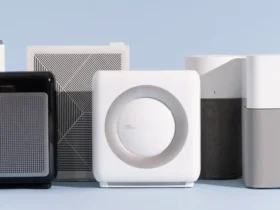
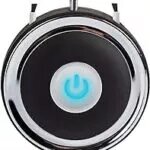
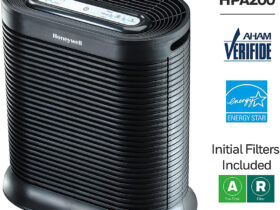
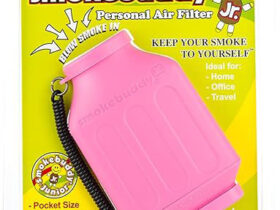
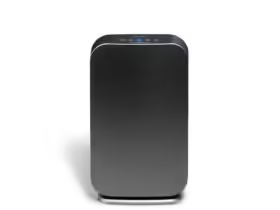
Leave a Review